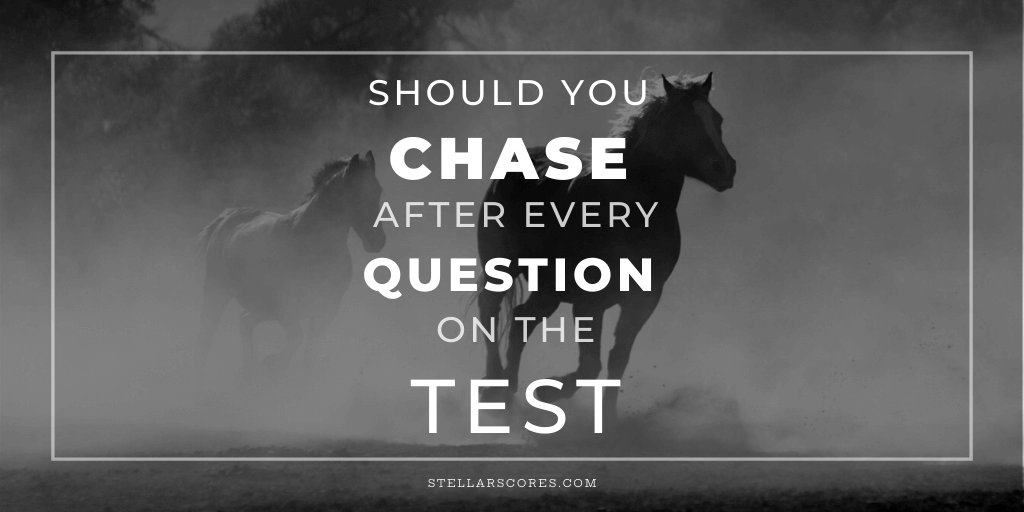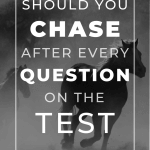
The SAT and the ACT don’t have any penalties for wrong answers. Which means you should never leave a question blank.
My beautiful niece, like many of my students, thought that meant she should spend time answering every single question (“because I might get it right!”) So she ended up rushing through questions she should have spent more time on (and getting them wrong) and wasting time on questions she had no business answering (and also getting those wrong)
Just because there is no wrong answer penalty, that does NOT mean that you should just wildly and randomly guess on all the questions that you don’t know how to solveThat’s a waste of time and brain power.
A better strategy
1. Solve it
If you can solve it correctly, do so. This is usually (but not always) the fastest route to the right answer.
2. Estimate
If you’re not sure how to solve it, can you estimate?
Can you leverage what you DO know to find what you DON’T know? Can you use the edge of your paper as a ruler to find the length of a side? Sometimes estimating can be even faster than solving directly.
3. Eliminate wrong answers
If you can’t solve it or estimate, can you eliminate any wrong answers? For example, does the answer have to be odd or even in the sequence?
4. Guess A
If you have no idea how to solve it or estimate, and can’t eliminate any wrong answers, choose A, and immediately move on. Don’t waste any time or brain cells trying to tackle a question that you don’t have a good shot of getting right.
A better ACT/SAT strategy to tackle math questions: 1. Solve it or 2. Estimate or 3. Eliminate wrong answers or 4. Guess AMy students have put this strategy to the test on both the ACT and the SAT. In fact, one student increased his score by 70 points overnight just by implementing a better guessing strategy.
Want weekly test tips and strategies?
Subscribe to get my latest content by email.
